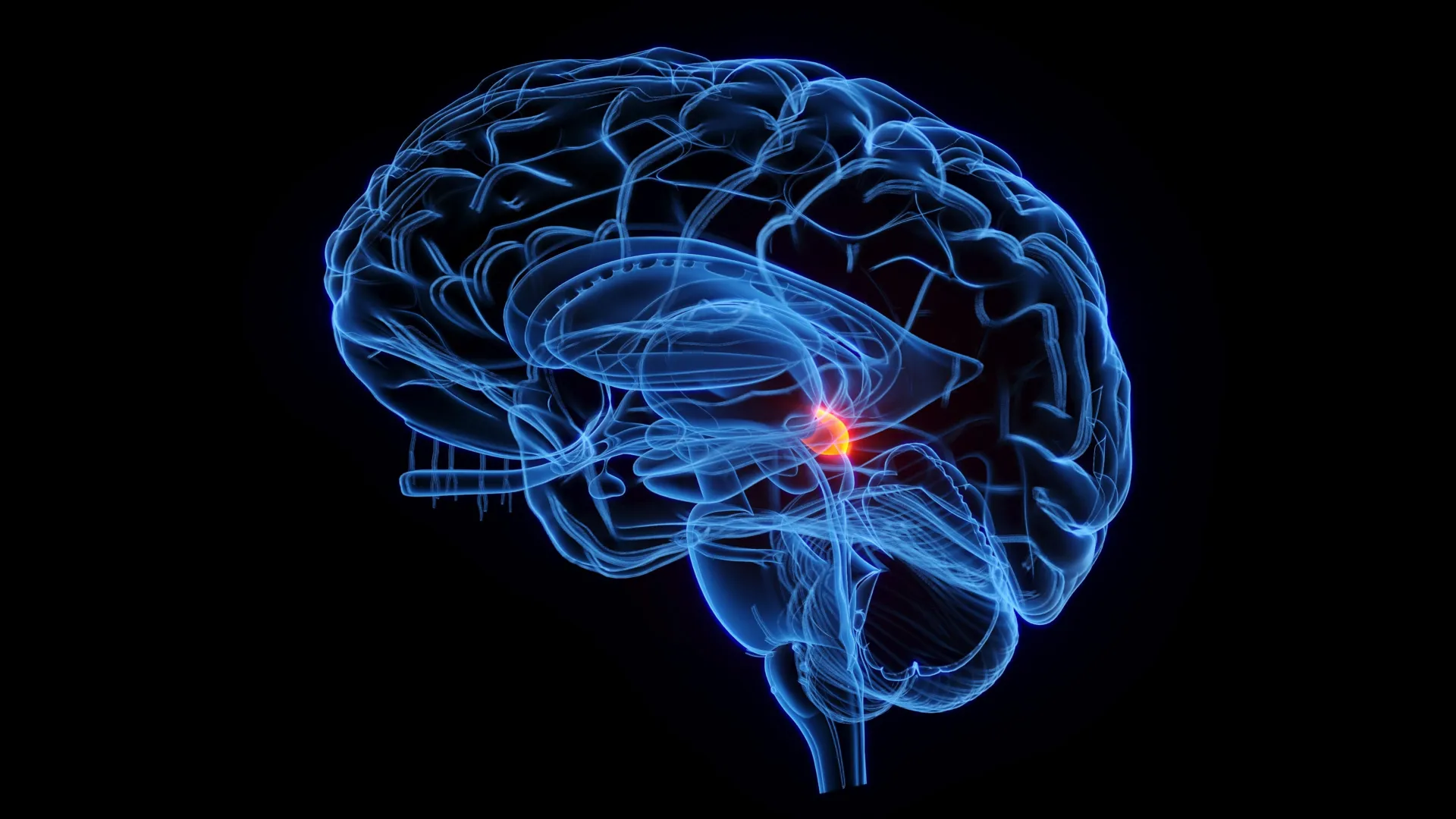Science
Ancient Brain Region Revealed to Guide Visual Attention

New research has unveiled that the superior colliculus, a brain region over 500 million years old, plays a significant role in how humans and other vertebrates interpret visual information. This finding challenges previous assumptions that complex visual processing was exclusively the domain of the more advanced cortex. The study, published in the journal PLOS Biology, highlights the importance of ancient neural circuits in shaping attention and perception.
The superior colliculus, which functions like a built-in radar, processes direct signals from the retina before they reach the cortex. This area helps determine which elements in our visual field demand attention. When an object moves or draws attention, the superior colliculus reacts first, directing our gaze toward the stimulus.
Andreas Kardamakis, head of the Neural Circuits in Vision for Action Laboratory at the Institute for Neurosciences (IN), a collaboration between the Spanish National Research Council (CSIC) and the Miguel Hernández University (UMH) of Elche, stated, “For decades it was thought that these computations were exclusive to the visual cortex, but we have shown that the superior colliculus can also perform them autonomously.”
Revolutionizing Our Understanding of Visual Processing
The research team employed advanced methods, including patterned optogenetics and electrophysiology, to investigate how the superior colliculus processes visual information. They discovered that this ancient structure can actively filter and modify visual signals, enhancing contrasts while reducing responses to uniform stimuli. “This demonstrates that the ability to select or prioritize visual information is embedded in the oldest subcortical circuits of the brain,” said Kuisong Song, co-first author of the study.
These findings not only revise our understanding of visual processing but also suggest that essential computational tasks crucial for survival—such as detecting threats or following movement—are managed by ancient brain structures. Kardamakis noted, “Understanding how these ancestral structures contribute to visual attention also helps us understand what happens when these mechanisms fail.” Disorders like attention deficits and sensory hypersensitivity may stem from imbalances between cortical communication and these fundamental circuits.
Collaboration and Future Research Directions
The research involved collaboration from institutions such as the Karolinska Institutet and the Massachusetts Institute of Technology (MIT). The team is now extending their work to live animal models to further investigate how the superior colliculus influences attention and distraction during goal-directed behavior. By understanding the neurological basis of attention in an age of visual overload, scientists aim to address significant implications for mental health.
Kardamakis and his colleague Giovanni Usseglio contributed a chapter to the forthcoming publication Evolution of Nervous Systems (Elsevier, 2025), which examines the evolutionary perspective of subcortical visual systems across species. Their work illustrates that structures similar to the superior colliculus found in various animals share a common function: merging sensory and motor information to guide attention.
This groundbreaking research was supported by the Severo Ochoa Programme for Centres of Excellence, Spain’s State Research Agency, and several other funding bodies. As scientists continue to explore these ancient neural mechanisms, the potential for improving our understanding of visual processing and related disorders remains vast.
-

 Science3 weeks ago
Science3 weeks agoIROS 2025 to Showcase Cutting-Edge Robotics Innovations in China
-

 Politics3 weeks ago
Politics3 weeks agoJudge Considers Dismissal of Chelsea Housing Case Citing AI Flaws
-

 Lifestyle3 weeks ago
Lifestyle3 weeks agoStone Island’s Logo Worn by Extremists Sparks Brand Dilemma
-

 World4 weeks ago
World4 weeks agoBravo Company Veterans Honored with Bronze Medals After 56 Years
-

 Health3 weeks ago
Health3 weeks agoStartup Liberate Bio Secures $31 Million for Next-Gen Therapies
-

 Science4 weeks ago
Science4 weeks agoArizona State University Transforms Programming Education Approach
-

 Health4 weeks ago
Health4 weeks agoTop Hyaluronic Acid Serums for Radiant Skin in 2025
-

 Sports4 weeks ago
Sports4 weeks agoYamamoto’s Mastery Leads Dodgers to 5-1 Victory in NLCS Game 2
-

 Top Stories3 weeks ago
Top Stories3 weeks agoIndonesia Suspends 27,000 Bank Accounts in Online Gambling Crackdown
-

 Sports4 weeks ago
Sports4 weeks agoMel Kiper Jr. Reveals Top 25 Prospects for 2026 NFL Draft
-

 Lifestyle4 weeks ago
Lifestyle4 weeks agoMary Morgan Jackson Crowned Little Miss National Peanut Festival 2025
-

 World3 weeks ago
World3 weeks agoHoneywell Predicts Record Demand for Business Jets Over Next Decade









